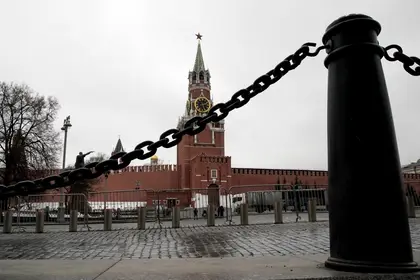In a recent White House press briefing, US National Security Advisor Jake Sullivan said China has not provided Russia with weapons in the ongoing war, but evidence – as well as earlier US intelligence reports – raised questions on the statement.
“China has not provided weapons to Russia as part of the war in Ukraine. But I will come back to you to confirm that that [sic] remains our latest assessment as of today because my information is a few days old,” said Sullivan in response to a journalist’s query.
JOIN US ON TELEGRAM
Follow our coverage of the war on the @Kyivpost_official.
The response came ahead of the high-profile meeting between US President Joe Biden and Chinese leader Xi Jinping in San Francisco, which will involve high-level discussions about the war in Ukraine and Gaza, among other important topics.
However, Chinese equipment is now seen on Ukraine’s battlefields, and Chinese-made components were found in Russian weapons used against Ukraine, leading to doubts regarding Sullivan’s statement.
On Nov. 10, Russia’s state media TASS reported the procurement of more than a thousand Chinese-made all-terrain vehicles (ATVs) from a civilian manufacturer, with Russian Defense Minister Sergey Shoigu calling it “extremely in demand” during an inspection alongside Putin.
A few days later, photos and videos of the vehicles on the Zaporizhzhia front surfaced on the internet, suggesting their deployment to Ukraine.

Up to 12,000 North Korean Troops Transferred to Russia, Satellite Images Show
While the Chinese government might not have an explicit role in Russia’s procurement of civilian vehicles for military use, the Chechen force’s use of Chinese-made armored vehicles would indicate a potentially higher degree of involvement.
In June, Chechen leader Ramzan Kadyrov posted an update on Telegram that depicted eight Chinese-made “Tiger” armored vehicles, which he claimed would supply Chechen units in Russia’s war in Ukraine.
More importantly, he emphasized that purchases were made after the invasion had begun.
The armored vehicles in question were made by the Shaanxi Baoji Special Vehicles Manufacturing Company in China. According to its official website, the armor could withstand 7.62mm armor-piercing rounds at the front, and ordinary 7.62mm rounds on the side and back.
The company is not a state-owned enterprise despite its “first-class weapon production” status, according to a 2017 press release, but it added that “Tiger” units were sent as part of China’s military aid to Nepal.
The nature of such vehicles remains somewhat ambiguous. While they could definitely be used in warfare, they could also be used by regular police for riot control purposes, allowing for “dual use” ambiguity – and deniability.
How it got to the Chechen forces remains uncertain, but the fact that it reached Russia after the invasion had begun has raised serious questions – whether it was supplied directly from China or through third parties, the Chinese government was likely aware of the exports.
China also did not answer with a straight “no” when pressed for answers by journalists.
“China has always adhered to an objective and fair stance on the Ukrainian issue and is committed to promoting peace and talks rather than passing fire and sword,” said Chinese official Wang Wenbin at a press conference on June 12, who also dismissed the claims.
Regarding the use of dual-use technology, an unclassified US intelligence report said China has probably supplied “key technology and dual-use equipment used in Ukraine” to Moscow.
“The customs records show PRC state-owned defense companies shipping navigation equipment, jamming technology, and fighter-jet parts to sanctioned Russian Government-owned defense companies,” the report stated.
It also said that shell companies, as well as small and medium-sized enterprises, have supplied Russia with computer chips from Hong Kong. China’s semiconductor exports to Russia also increased by 19 percent in 2022 compared to the previous year, while global exports to Russia and Belarus decreased by 54 percent.
Semiconductors remain a critical component in maintaining and repairing Russia’s high-tech military equipment.
Another report of note came from Reuters in August, where Ukrainian officials claimed to have identified components from Norinco – China’s state-owned defense corporation – in Russian equipment, but Norinco representatives denied the claims.
Whether the supply of dual-use equipment and technology are considered “weapons” remains debatable, yet it is sufficient to say that Chinese actions have, to a degree, contributed to Russia’s war efforts in Ukraine.
But until the dust settles, the question of China’s weapon supplies to Russia is one of ambiguity.
You can also highlight the text and press Ctrl + Enter






